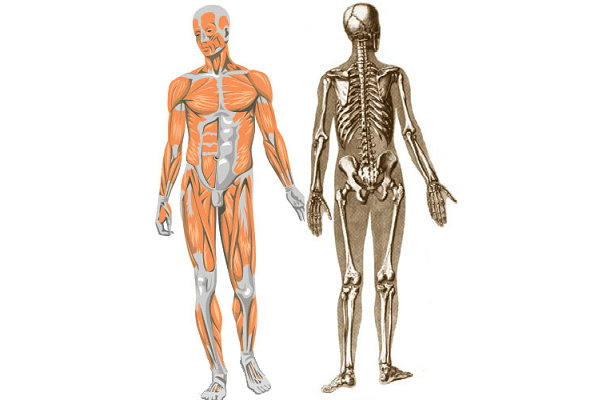Musculoskeletal system >>>> Rheumatic diseases - don't miss a start
Rheumatic diseases - don't miss a start.

Rheumatic diseases belong to the category of diseases of the musculoskeletal system. With the development of this kind of diseases, the joints and muscle tissue are involved in the destructive processes. Often, with many rheumatic diseases, internal organs are also affected.
Rheumatic diseases include about 150 different types of diseases, and they all have similar symptoms:
- Rheumatism (synonyms: Acute rheumatic fever)
- Rheumatoid arthritis
- Seronegative spondyloarthropathies
- Gout, pseudogout
- Diffuse connective tissue diseases
- Systemic vasculitis
- Lower back pain
- Diseases of extra-articular soft tissues
- Osteoarthritis
- Osteoporosis
- Osteochonropathy and many others.
The reasons for the development of rheumatic diseases are as varied as the diseases of this kind themselves. Infections, injuries, orthopedic diseases, metabolic disorders, allergies, neoplasms, autoimmune processes and many other factors can disrupt the normal state of joints and muscles.Attention should be paid to the symptoms of rheumatic diseases:
- Pain of varying intensity in the joints - arthralgia (the intensity of pain varies from minimal pain to super strong).
- Joint stiffness , most often in the morning.
- General stiffness in movements in the vertebral, cervical, thoracic and lumbar regions.
- Changing the shape of the joints.
- Change in skin color over the affected joint.
- Limited movement of the affected joint.
- Swelling in the joints .
- Noise, crackling or crunching in the joints , sometimes accompanied by pain (for comparison: movements in healthy joints occur silently, freely and painlessly).
- Muscle pain - myalgia.
- When examining skeletal muscles, asymmetry of the paired muscles of the right and left sides of the trunk is observed (in case of muscular rheumatic diseases).
- Possible pain in the area of ligaments, tendons, in the places of attachment of tendons to bones.
- On palpation, you can find: joint hyperthermia, swelling, sensitivity, fluid accumulation (normally there is some synovial fluid in the joint, but it cannot be felt), seals / nodules in soft tissues.
The key to successful treatment of rheumatic diseases is to strive to identify the disease at the earliest stage of its development. Which implies on the part of a potential patient to be sensitive to the signals of his body, correlating them with the above symptoms, and to consult a doctor with even a slight suspicion of the development of rheumatic diseases. On the part of the doctor, correct diagnosis and differentiation of rheumatic disease and diseases similar in symptoms is required.
Diagnostic methods for detecting rheumatic diseases.
Laboratory diagnostics are carried out to determine the degree of activity of the inflammatory process, identify systemic lesions and evaluate the effectiveness of the therapy. As part of laboratory diagnostics, blood tests are performed to count reticulocytes and platelets, identify anemia, leukopenia, ESR. Next, a general urine analysis is performed, combining it with a study of the concentration and filtration functions of the kidneys (urine culture, Nechiporenko analysis, two-glass test). If necessary, a coprological study (fecal analysis), a search for helminths and the identification of disorders in the gastrointestinal tract are carried out in order to identify the causes of chronic blood loss or clinically significant infectious agents.
Biochemical studies calculate the content of globulin proteins, analyze indicators of fibrinogen, C-reactive protein, sialic acids, seromucoid, make sediment samples of thymol and sublimate. Coagulogram, creatinine and urea are monitored. Examine the concentration of enzymes present in muscle tissue (creatine kinase, aldolase), liver enzymes. An analysis of the ratio of phosphorus and calcium in the blood serum is carried out, the state of the thyroid gland is examined.
Immunological studies assess the quantitative and qualitative characteristics of the immune agents of cellular and humoral immunity. Studying the work of cellular immunity, the number of leukocytes and monocytes in the blood serum is examined; complement level, phagocyte mobility, cytokine production, quantitative content of various groups of T-lymphocytes (reactions of inhibition of leukocyte migration, reaction of lymphocyte blast transformation, etc.). The functional state of humoral immunity is determined by the quantitative characteristics of immunoglobulins in the blood plasma, by the study of rheumatoid factors (autoantibodies), by the determination of lupus cells, antinuclear antibodies and other antibodies, as well as the reaction to antibodies after infections. The search for cryoglobulins and circulating immune complexes is underway.
Study of synovial fluid, its bio - chemical - physical properties (color, sediment, transparency, density, viscosity, cytosis, crystallization, the presence of lymphocytes and rogocytes, proteins) and quantity.
Hardware research methods, including:
- X-ray of joints and internal organs,
- Joint ultrasound examination,
- MRI allows examining the condition of articular cartilage, inert marrow, thickness of the synovial membrane,
- Arthrography - X-ray of the joint against the background of the introduction of oxygen or carbon dioxide into the articular cavity, or contrasting iodine-containing compounds,
- Radioisotope study of joints against the background of injected labeled pyrophosphate or technetium,
- Arthroscopy - visual examination of the articular cavity using an arthroscope,
- Thermal imaging of the joints evaluates microcircular abnormalities and local temperature above the joint.
All of the above methods make it possible to detect inflammatory processes at the early stages of the development of rheumatic diseases, which will contribute to the timely initiation of therapeutic treatment of these diseases.

Read

Read



























